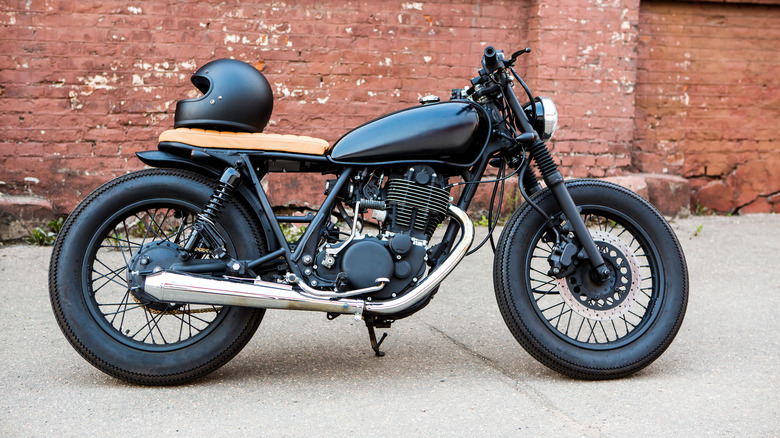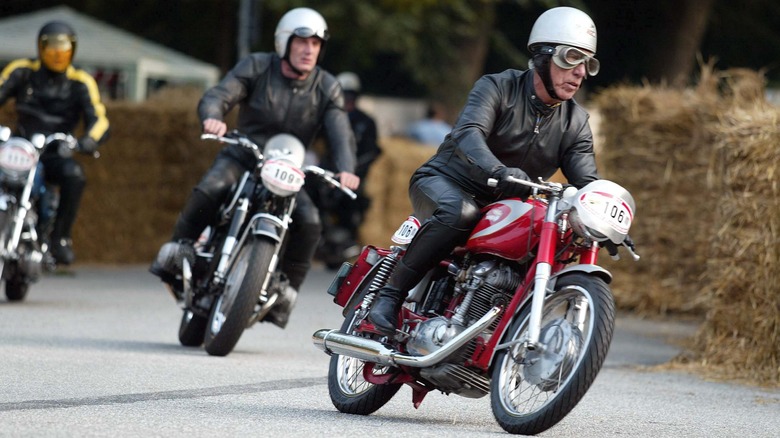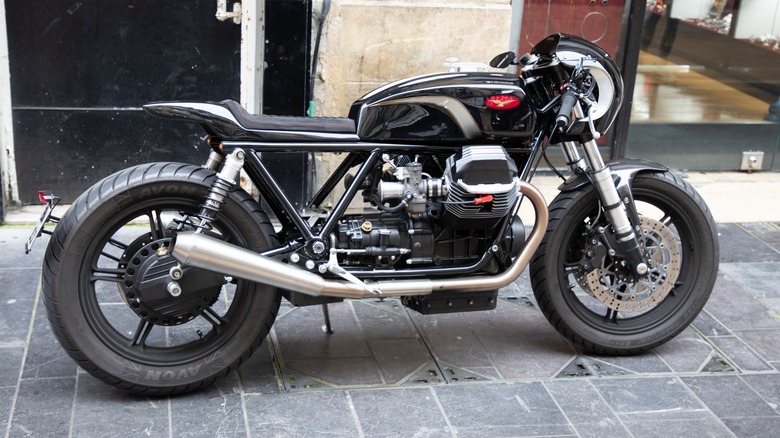What Makes A Motorcycle A Café Racer?
A café racer style motorcycle just sounds cool. This type of motorcycle has been around for years now, sticking out amongst the range of bikes as a sleek and nimble option. Built for speed by gearheads of yesteryear, they were intended to be tuned for power, with snarling exhaust notes and exposed frames.
These bikes were sometimes associated with rockers and "ton-up boys". Hitting "the ton" was a goal shared by early café racer enthusiasts, which meant tuning your bike to be able to hit, or exceed, an eye-watering 100 miles per hour. The riders would often race to and from a café as a meetup point, attempting to make a loop of a route before a song on the café jukebox finished playing.
On the streets today, you'll see so many motorcycle types whizzing by, from cruisers to sport bikes, choppers, and touring bikes, and of course, café racers. These motorcycles still retain a following and presence all these years later, yet may fly under the radar as a more niche option. Here, we will aim to break down what constitutes a café race type motorcycle, highlighting the features of these zippy bikes, and how they came to be in the first place. Strap on your helmet and take notes.
A history of tuning and rebellion
As the story goes, these bikes were born out of post-war Britain youth culture, championed by young riders for short, speedy rips between cafés. They rose to prominence in the late 1950s to early 1960s, with an emphasis on reduction, where all excess parts considered ineffectual — side panelling, fairings, bulky fenders, and chain enclosures — were removed for weight-savings, hence faster speed potential.
They are small, light, and minimalistic in their configuration, and sometimes based on disused or decommissioned military platforms. As such, they almost went hand-in-hand with tuning on an individual level, as a hobby, and by extension, lifestyle.
The quintessential 20th century café racer was usually based on the British Triumph Bonneville, with other brands like Norton also associated with the style and culture. Riders were obsessed with constantly tinkering and tuning their rides to get the most performance out of them, but also in doing so, espoused a social side to the hobby.
Simply owning a café racer motorcycle didn't mean you were a non-conformist, but in those early days, it had a certain connotation, in part due to Hollywood here in America. Movies with the stars wearing leather jackets, cigarettes dangling from their lips, leaning against a stout mid-century motorcycle, helped to show glimpses of the culture to mainstream audiences.
Configuration and updates
Café racer configurations had shorter wheelbases to help with city driving, allowing for agile turning — the complete opposite of stretched out choppers. Much like a track bicycle, the front fork geometry was a bit steeper, for an aggressive stance, with low (dropped) and flat bars to pull the rider forward for better wind resistance. The engines were tuned with high compression, hot cams, and tricked-out carburetors, with a wide range of displacements averaging 650cc.
The instrumentation was, as you can imagine, very minimal. A speedometer and tachometer, and turn signals might be found in the cockpit cluster, but certainly nothing requiring too much space. The seating and centre of gravity is also lower, keeping riders close to the bike's frame.
Today, they're still going strong as a genre of motorcycle, with many of the fastest café racers today carrying on the legacy of those early enthusiasts. Brands like the aforementioned Triumph, BMW, Kawasaki, and Moto Guzzi are all making modern iterations of bikes with café racer DNA. This boils down to more reliability, better tech, and ease of use for the modern era of motorcycling.
However, you'll still see some of those classics on the road if you keep your eyes peeled — remarkable considering those antique bikes are nearing 50 years old, or even older. The spirit indeed lives on!


